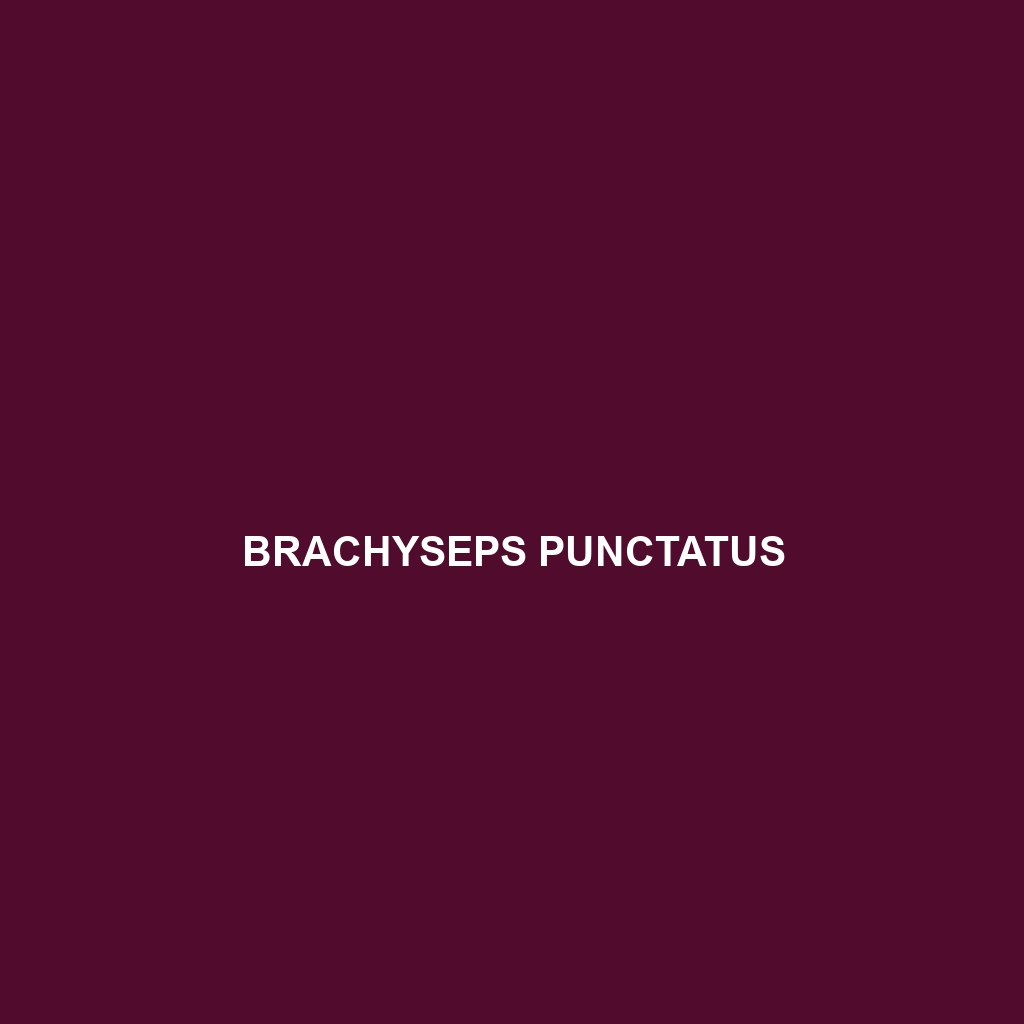Brachyseps punctatus – Species Description
Common Name: Brachyseps punctatus
Scientific Name: Brachyseps punctatus
Habitat
Brachyseps punctatus, commonly known as the spotted skink, is primarily found in the humid forests of Madagascar. This skink thrives in diverse habitats, including rainforest floors, leaf litter, and under decaying logs, where the moisture-rich environment supports its survival. Geographic locations include the eastern rainforests and the surrounding wet areas of the island, contributing to its unique ecological niche.
Physical Characteristics
This species typically measures around 10 to 15 centimeters in length. Brachyseps punctatus is characterized by its elongated body shape covered in smooth, shiny scales. The coloration varies widely, with a distinctive pattern of dark brown or black body adorned with irregular yellow or cream spots, providing effective camouflage against predators. Its limbs are small, and it has a relatively short tail, contributing to its overall streamlined appearance.
Behavior
Brachyseps punctatus exhibits primarily diurnal behavior, being active during the day. These skinks are known to be quite agile, often seen basking on logs or rapidly darting through leaf litter to avoid predators. Their social behavior involves territoriality, where males establish dominance through displays and quick movements. Additionally, they are known to be adept climbers, occasionally venturing onto branches and shrubs in search of food.
Diet
The diet of Brachyseps punctatus consists mainly of small invertebrates, including insects and arachnids. It is an opportunistic feeder, hunting for ants, beetles, and spiders in its forest habitat. Their feeding habits are essential for controlling insect populations, demonstrating their ecological role as both predator and prey within their environment.
Reproduction
Reproductive activity in Brachyseps punctatus typically occurs during the warmer months, with breeding season peaking in late spring to early summer. Females lay a clutch of 2 to 5 eggs, which they often bury in moist soil or leaf litter for optimal incubation. The newly hatched skinks emerge fully formed and are independent from birth, showcasing a fascinating aspect of their reproductive strategy.
Conservation Status
Currently, Brachyseps punctatus is listed as endangered due to habitat destruction and fragmentation driven by logging and agricultural expansion. Conservation efforts are critical to preserving this species and its unique habitat, highlighting the importance of protecting Madagascar’s rich biodiversity.
Interesting Facts
Brachyseps punctatus is notable for its ability to regenerate its lost tail, a common trait among many lizard species that helps them evade predators. Furthermore, their unique coloration plays a significant role in their defensive behavior, allowing them to blend seamlessly into their environment, making them difficult to spot by both predators and prey.
Role in Ecosystem
As both predator and prey, Brachyseps punctatus plays a vital role in its ecosystem by helping to maintain the balance of insect populations. Their presence is an indicator of a healthy forest environment, and they serve as food for various birds and larger reptiles, highlighting their importance to the food web in Madagascar’s forest ecosystems.
